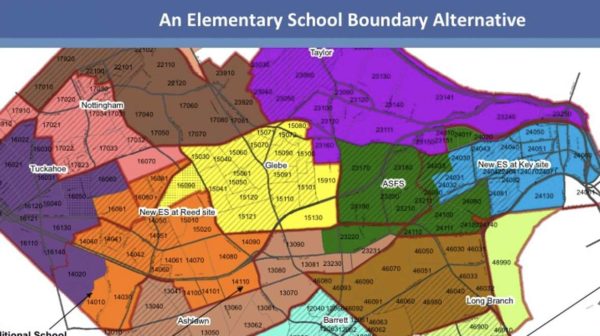 Peter’s Take is a biweekly opinion column. The views expressed are solely the author’s.
Peter’s Take is a biweekly opinion column. The views expressed are solely the author’s.
On December 4, ARLnow documented APS’s conclusions that:
“Black and Hispanic students [in K-2] dropped off the most [with respect to foundational literacy skills] during remote learning, while students with disabilities continue to perform far below neurotypical children and the overall student population.”
Former School Board candidate Symone Walker correctly observed that “COVID-19 exacerbates a problem that has persisted for years, one she said is partially rooted in inconsistent methods of teaching literacy.”
In pre-COVID-19 columns, I highlighted why independent experts concluded that APS should:
- change the way it teaches reading
- de-emphasize virtual learning in K-5.
The current upsurge in Arlington COVID-19 community spread may be great enough to require APS temporarily not to provide in-person instruction widely, but independent experts and APS’s own data establish that virtual learning causes serious harm to thousands of children, especially our community’s youngest and most vulnerable.
These are the critical steps that both APS and Arlington County government must join together to take NOW to address our community’s instructional crisis:
- make virtual learning much better
- adopt a plan to open schools safely ASAP in 2021 for students whose parents choose in-person learning
Make virtual learning much better, especially for the most vulnerable
APS must make virtual learning the very best it can be. But for many thousands of our community’s children, in-person learning will always be infinitely better.
Students with disabilities are being left behind by APS’s shelve-them-in-classrooms approach. These children currently go to school where only an aide monitors them logging on to an iPad. They need so much more in-classroom, in-person professional help. Why isn’t APS providing it?
APS needs to work with parents to adjust significantly the current virtual school day. Sitting online for a full school day is not developmentally appropriate for K-5. Children in this cohort need maybe 2 hours of instruction in math/reading/writing to stay on track. The rest of it should be optional. Many excellent suggestions by Sal Khan of Khan Academy are here.
Adopt a crash program to open APS schools safely ASAP in 2021
January 6, 2021 marks 300 days since the vast majority of APS students were in school.
APS and the Arlington County government must collaborate to plan NOW to open schools safely ASAP in 2021 for parents who choose in-person learning. That plan requires a specific reopening target date.
When to reopen schools is among the most important educational policy decisions currently facing the School Board. That board’s claim that this decision is purely an “operational” decision (entirely up to the Superintendent) is just plain wrong. Dr. Durán (and tacitly the School Board) continue to default always to the wrong message: schools will not reopen.
But the message that thousands of parents and residents want to hear is: we are working day and night to develop a plan to reopen schools safely. The School Board also needs to direct Dr. Durán to articulate more clearly APS’s air quality and lunch arrangement plans.
The County Board must step up
The County Board has a vital role to play in helping the School Board open schools safely. The County Board’s current claim that this decision is entirely up to APS also is a cop out. In our health emergency, the County Board must step up.





